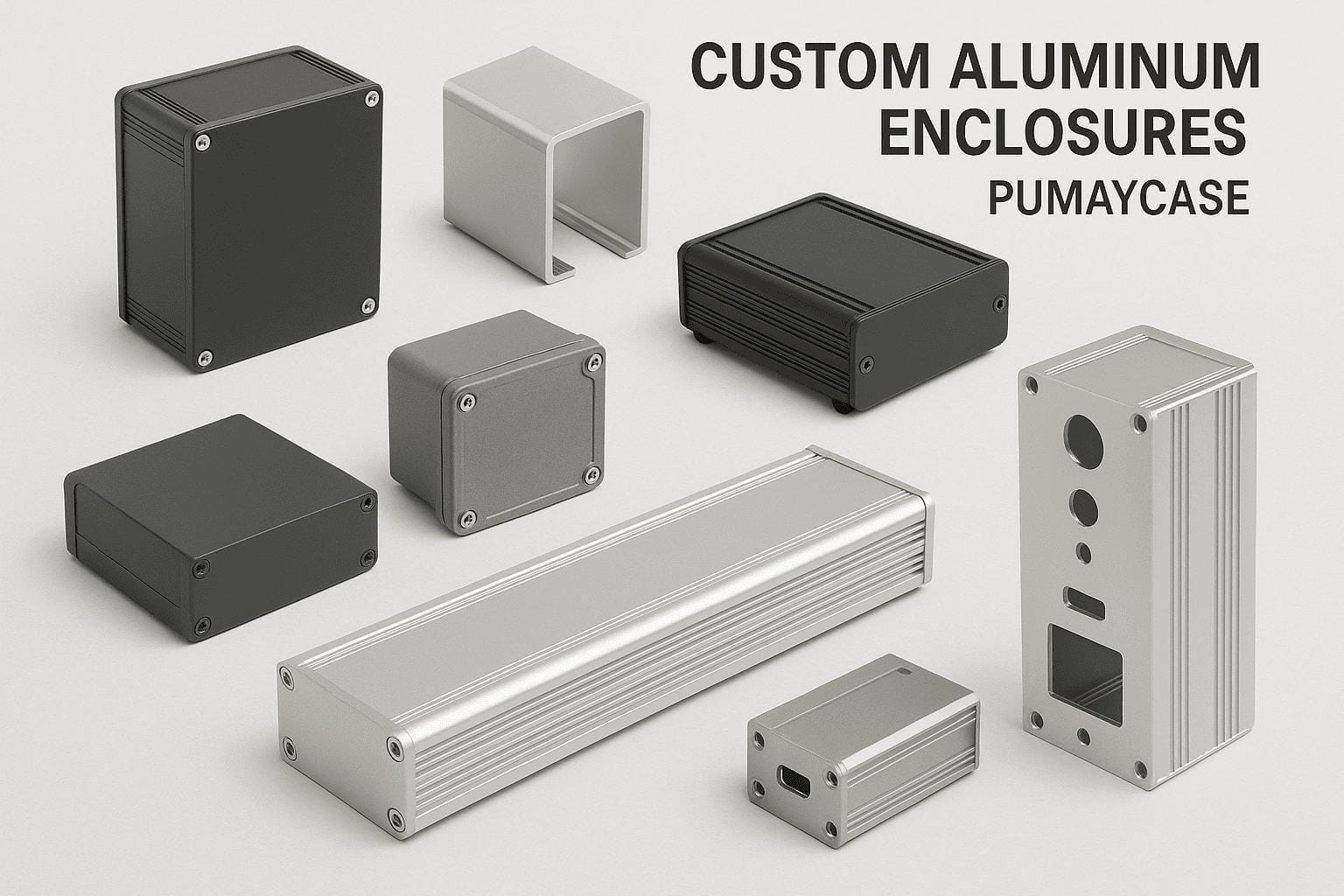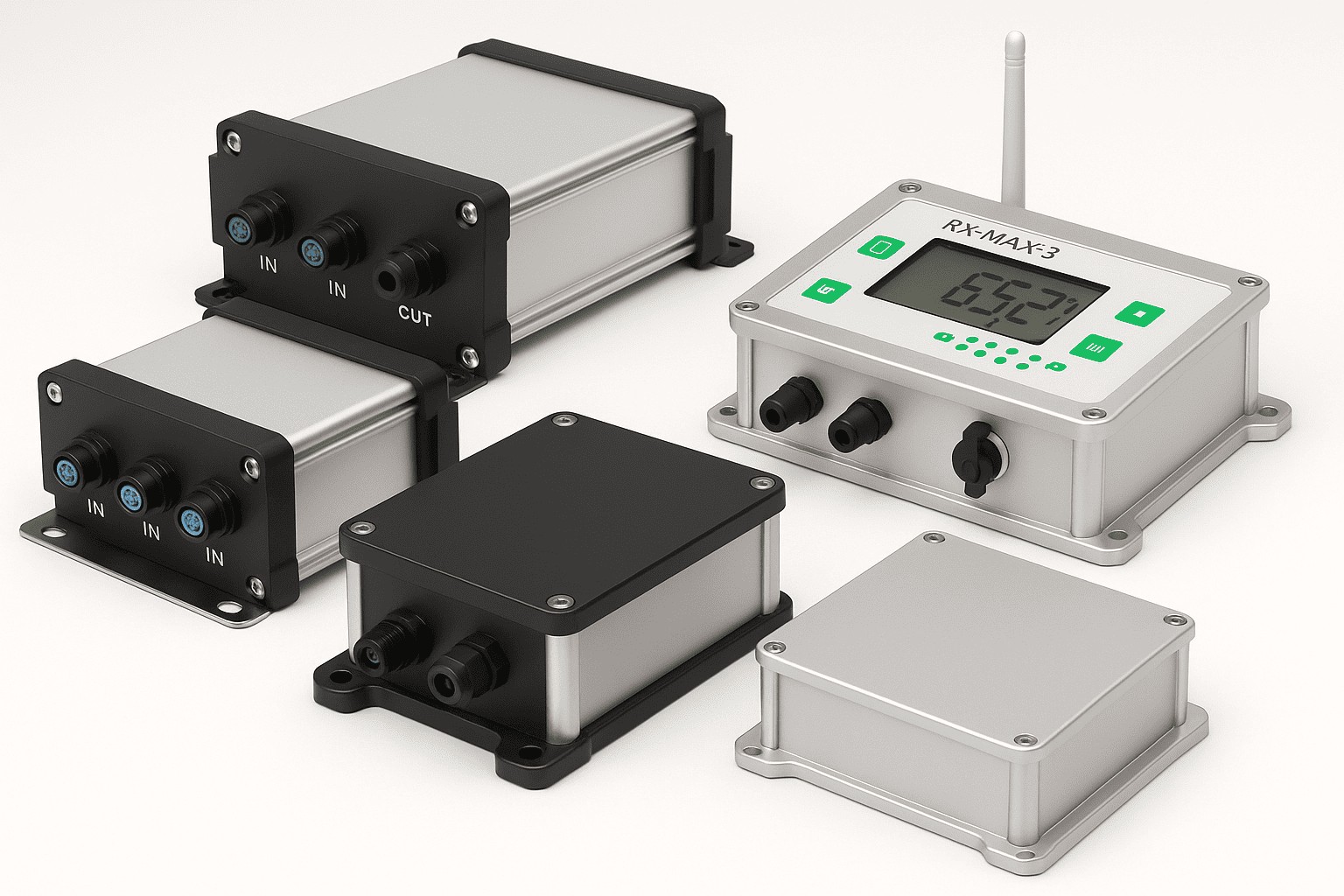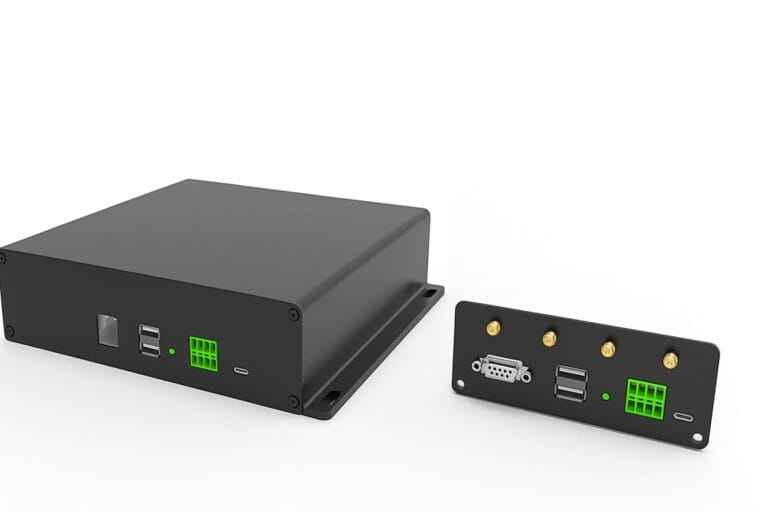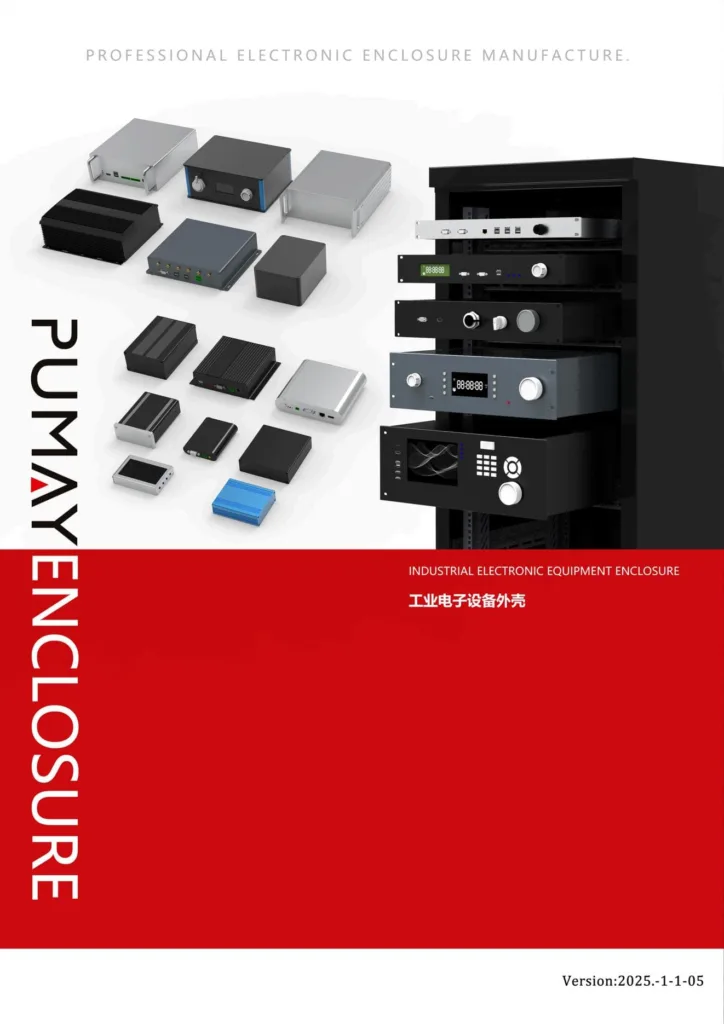You need aluminum enclosures but outdated designs cause project delays. Without knowing recent market trends, your designs might fall behind competitors and lose customers.
The latest trends for aluminum enclosures in Europe include modular designs[^1], increased IP ratings (IP67/IP68), lightweight yet robust construction[^2], integrated EMI shielding[^3], and rapid customization capabilities[^4].
 "Aluminum Enclosure Trends"
"Aluminum Enclosure Trends"
Let’s explore each trend deeply, so you can apply them effectively and stay ahead in your industry.
Why is modular design trending in aluminum enclosures?
Complicated designs lead to long production times, increased costs, and missed deadlines, which frustrate both you and your clients.
Modular designs streamline production and allow quick customization. By using standardized profiles[^5] and interchangeable end plates[^6], companies reduce lead times and lower development costs significantly, accelerating product launches.
 "Modular Aluminum Enclosures"
"Modular Aluminum Enclosures"
Modular aluminum enclosures simplify the design process by breaking the enclosure into standardized parts. Companies can easily adjust the length, height, or other dimensions without significant redesign. With modular solutions, engineers can respond quickly to changing requirements, reducing delays in prototype phases. Moreover, modular designs minimize supply chain risks[^7] by reducing the number of custom parts sourced from multiple suppliers. I have seen many customers choose modular aluminum enclosures to efficiently scale from prototypes to large-volume production. This approach also means shorter communication times with manufacturers, reducing misunderstandings about specifications or tolerances.
| Advantage | Modular Design Benefit |
|---|---|
| Fast Customization | Interchangeable parts speed up development |
| Lower Cost | Standardized components cut manufacturing costs |
| Easy Assembly | Less complexity shortens assembly time |
How are higher IP ratings shaping aluminum enclosure demand?
When your instruments are exposed to harsh environments, dust or water penetration can cause costly equipment failures and maintenance downtime.
Aluminum enclosures with IP67/IP68 ratings[^8] offer complete dust protection and resistance to water immersion, meeting rigorous environmental demands. Higher IP ratings are increasingly required for outdoor, industrial, and IoT applications, driving market demand upwards.
 "IP67 Aluminum Enclosure"
"IP67 Aluminum Enclosure"
The increasing number of IoT devices, industrial sensors, and smart city infrastructure projects in Europe raises demand for robust aluminum enclosures. These applications often face extreme weather conditions or challenging operational environments. As a result, IP67 and IP68 aluminum enclosures, providing total dust and water protection, have become essential. My experience shows that many engineers prefer enclosures validated by official third-party test reports. These reports save valuable time and resources compared to conducting in-house tests. Aluminum enclosures with documented high IP ratings[^9] give designers confidence, reducing the risk of failures that could damage brand reputation.
| IP Rating | Protection Level | Common Applications |
|---|---|---|
| IP67 | Dust-tight, short water immersion | Outdoor sensors, industrial controls |
| IP68 | Dust-tight, prolonged immersion | Marine equipment, underground devices |
Why is lightweight yet robust aluminum preferred?
Heavy enclosures can increase transportation costs, complicate installation, and negatively affect equipment efficiency.
Lightweight yet strong aluminum enclosures balance weight reduction with structural integrity. This combination enhances portability, simplifies installation, and is especially critical for mobile applications or UAVs.
 "Lightweight Aluminum Enclosures"
"Lightweight Aluminum Enclosures"
The European market increasingly values aluminum enclosures that minimize weight without sacrificing durability. Advanced manufacturing methods, like optimized CNC machining[^10] and extrusion profiles, allow for lighter designs while maintaining structural strength. This trend is crucial in industries like aerospace, UAVs, robotics, and handheld devices, where every gram matters. Reducing weight enhances mobility, reduces energy consumption, and simplifies installation. Aluminum naturally offers excellent strength-to-weight ratio compared to plastic or steel alternatives. In my recent projects, many engineers specifically requested aluminum solutions for weight-critical applications. Lightweight aluminum enclosures are increasingly becoming the default choice, especially when combined with precision CNC machining techniques.
| Benefit | Aluminum Enclosure Advantage |
|---|---|
| Portability | Easier handling and transportation |
| Installation Ease | Simple assembly with lighter weight |
| Reduced Costs | Lower transportation and energy costs |
How important is integrated EMI shielding[^3]?
Without effective EMI shielding, sensitive electronics can suffer signal interference, causing inaccurate data or even device malfunction.
Integrated EMI shielding in aluminum enclosures blocks electromagnetic interference effectively, ensuring stable performance. This trend is critical for sensitive electronics, medical devices, and high-frequency communication equipment, boosting reliability significantly.
 "EMI Shielded Aluminum Enclosure"
"EMI Shielded Aluminum Enclosure"
Electromagnetic interference (EMI) shielding has become essential in European aluminum enclosure design, especially for advanced technology industries. Devices such as IoT modules, medical instruments, and telecommunication equipment require consistent and precise operation, which EMI can disrupt. Aluminum naturally provides good EMI shielding due to its high conductivity. However, integrating additional shielding measures, like conductive gaskets[^11] or coatings, further enhances performance. European standards and regulations also increasingly require documented EMI protection. I regularly recommend integrated shielding solutions to clients working on precision sensors[^12] or communication modules. Companies adopting EMI-shielded aluminum enclosures report fewer performance issues, lower risk of recalls, and improved customer satisfaction[^13].
| EMI Shielding Method | Aluminum Enclosure Benefit |
|---|---|
| Conductive Gaskets | Enhanced electromagnetic compatibility (EMC) |
| EMI Coatings | Reliable performance for sensitive electronics |
Is rapid customization becoming a must-have?
Long wait times for customized enclosures delay projects and frustrate clients, jeopardizing your ability to meet tight deadlines.
Rapid customization capabilities for aluminum enclosures are becoming essential. Using digital manufacturing processes like CNC machining or laser marking allows quick turnaround times, meeting the growing demand for flexible, small-batch production[^14].
 "Rapid Customization Aluminum Enclosure"
"Rapid Customization Aluminum Enclosure"
European markets increasingly require rapid customization of aluminum enclosures to keep pace with fast-moving product development cycles. Digital manufacturing methods such as precision CNC machining, laser marking, and advanced anodizing techniques[^15] have accelerated enclosure customization significantly. Now, it is possible to get small-batch production[^14] runs quickly and efficiently without excessive costs. This trend is particularly beneficial for startups and innovative companies needing agile development processes. My experience has shown that rapid customization directly influences project success. It allows engineers to quickly test prototypes, adapt designs, and launch final products within competitive timelines. Faster customization also strengthens communication between clients and enclosure suppliers, ensuring clear, transparent project management[^16] and fewer errors.
| Rapid Customization Benefit | Aluminum Enclosure Advantage |
|---|---|
| Quick Prototyping | Shortened lead times for early-stage testing |
| Agile Production | Flexible small-batch runs |
Conclusion
Keeping up with these aluminum enclosure trends—modular designs, higher IP ratings, lightweight construction, integrated EMI shielding[^3], and rapid customization—will strengthen your competitive advantage in Europe's demanding market.
---
[^1]: Explore how modular designs can streamline production and reduce costs, enhancing your project efficiency.
[^2]: Discover how lightweight designs can improve portability and reduce transportation costs.
[^3]: Find out how EMI shielding enhances performance and reliability for sensitive electronics.
[^4]: Understand how rapid customization can meet tight deadlines and improve project outcomes.
[^5]: Learn how standardized profiles can simplify the design process and reduce lead times.
[^6]: Explore the flexibility that interchangeable end plates provide in aluminum enclosure design.
[^7]: Discover strategies to reduce supply chain complexities and enhance production efficiency.
[^8]: Learn about the importance of IP ratings for protecting your devices in harsh environments.
[^9]: Learn about the growing demand for robust enclosures in outdoor and industrial applications.
[^10]: Find out how CNC machining can enhance precision and reduce production times.
[^11]: Learn how conductive gaskets enhance electromagnetic compatibility in aluminum enclosures.
[^12]: Learn about the critical role of precision sensors in ensuring reliable device performance.
[^13]: Discover how thoughtful design choices can lead to improved customer experiences.
[^14]: Understand how small-batch production can cater to flexible and innovative design needs.
[^15]: Discover how anodizing can improve durability and aesthetics of aluminum enclosures.
[^16]: Explore strategies for better communication and management in enclosure projects.




